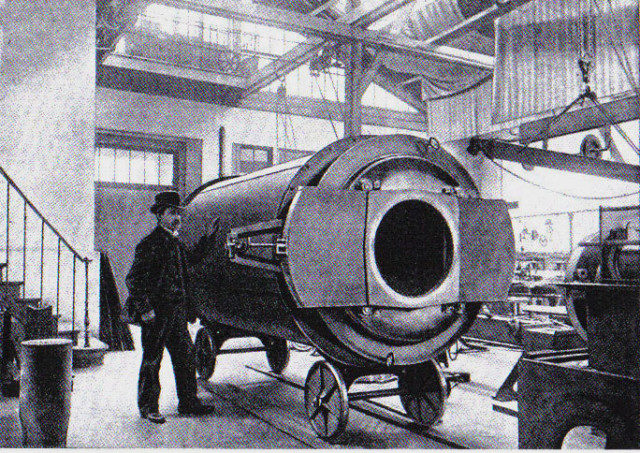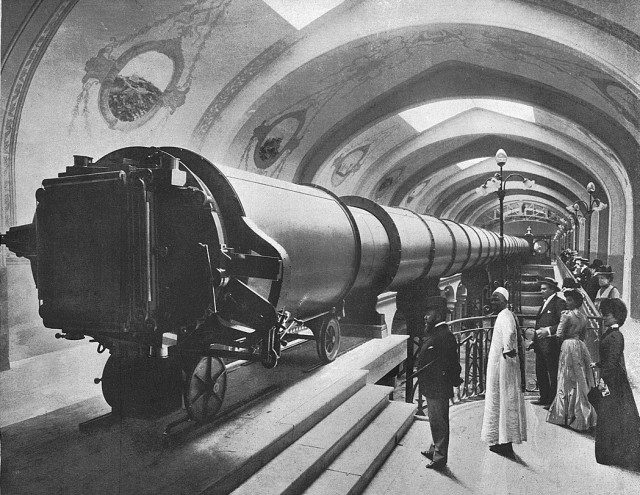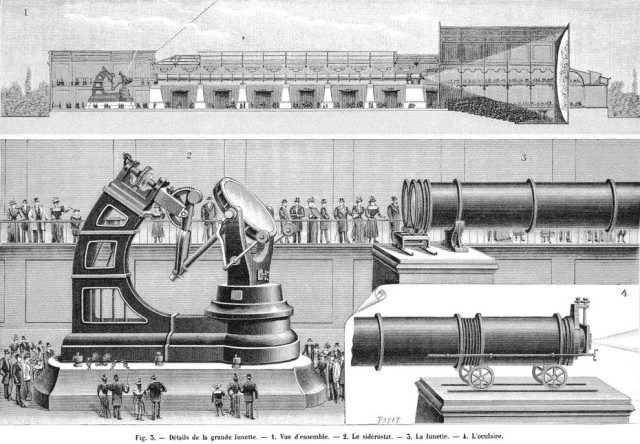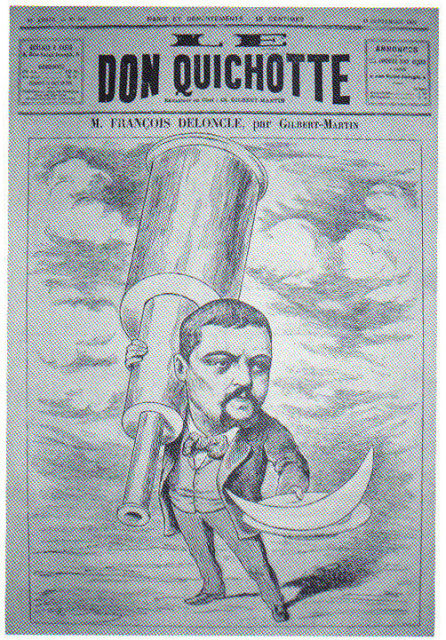In 1892, François Deloncle had an idea for the Paris Universal Exhibition of 1900, more commonly known as the World’s Fair.
He and his Chambre des Députés team constructed the largest refracting telescope ever made and placed it in the Palais de l’Optique, close to the Eiffel Tower. Because it was built specifically for the Exhibition it was not considered useful for true scientific work.

The telescope had two objective lenses that were interchangeable, and the cast iron frame was set up horizontally. The base was made from seven concrete pillars which had steel towers made to support the twenty-four cylinders in a two hundred foot long tube that boasted a moveable six and one half foot mirror to allow light into the tube. The exhibit was placed in a room that had a retractable ceiling, perfect for star gazing.

The mirrors were made by the Gautier Company and the Jeumont Glassworks in northern France. The only lens that was useable was the object lens for photographic viewing, but the incomplete lens for visual observing was placed in an optical display in a building near the telescope. Paul Gautier decided that the seventy-nine-inch diameter mirror would be made entirely by mechanization and was finally completed nine months after the project was started.
Although it was primarily built for the Exhibition, Father Theophile Moreux, a director of a private astronomical observatory in France, was able to find sunspots on the sun and recreate them in drawings which were printed in several publications, including Cosmos. Eugene-Michel Antoniadi, a Greek assistant astronomer working in Juvisy, France, got a look at a nearby nebula and made detailed drawings which were published in the Bulletin de la Societe Astronomique in 1900. Charles Le Morvan from the Paris Observatory provided several detailed pictures of the Moon with the new telescope and had them published in the November 1900 issue of Deloncle magazine.

The public made fun of the enormous telescope, seeing no value as it was built primarily for the show. What they did not realize was that the telescope was built on such a large scale to help people understand how similar telescopes worked. A person could begin his walk near the eyepiece, which was large enough that a full grown man could step into, observe how the mirrors reflected light into the tube, and then stroll down the almost 200 feet outside length of the tube to the lens end.
A disparaging political cartoon was published in the Le Don Quichotte magazine in 1892, featuring Deloncle with a large telescope propped upon his right shoulder like a rifle and a plate holding a sliver of the moon being held in his left hand implying Deloncle was planning on handing the public the Moon on a silver platter. Some accused Deloncle of trying to prove there was life on the Moon or on Mars with his new telescope.
While the several experts who actually used the telescope secretly hoped it would remain usable, the telescope was not seen as practical by the public. The Chambre des Députés was forced to declare bankruptcy after the telescope was unsuccessfully placed up for auction after the Exposition.

With no serious buyers, the telescope was eventually dismantled, and most of the parts were sold as scrap metal. The large mirror, however, was preserved and is presently on display at the Observatoire de Paris, the largest astronomical research center in the world which has been open since 1667 and houses the discoveries of the finest astronomers in France, while two of the lenses are packed away in the basement of the museum.
Whether or not the lenses and mirror will ever be used again to scan the heavens is doubtful, but they certainly served their purpose of educating and entertaining the public at the Paris Expo in 1900.
